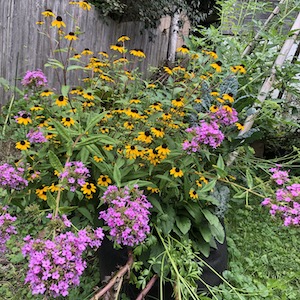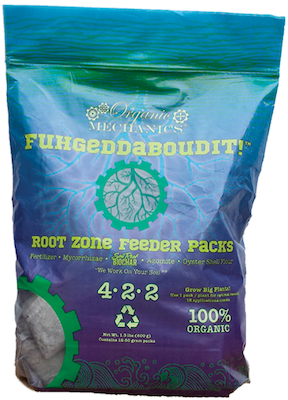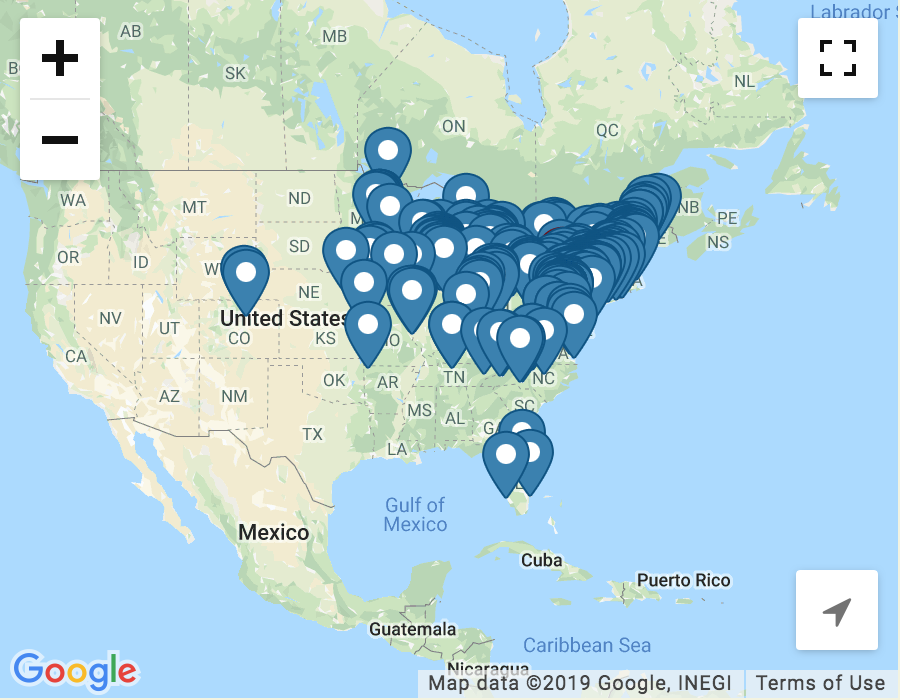Perhaps you were bitten by the gardening bug during the first few months of the pandemic. You may have sprinkled some lettuce seeds in a window box, bought some tomato plants for the sunny patch in the back yard or potted up all sorts of colorful annuals to brighten up your deck. You’re even watching some fall-planted bulbs emerge from a winter’s nap. Success!! You have a pretty good handle on this gardening hobby.

But like all newish gardeners, you’re asking yourself what the next gardening challenge may be. May we suggest planting some perennials?
Why a Perennial Garden?
Extensive swathes of blooming perennials may seem intimidating to design, install and maintain. But truly, a perennial patch can be as simple as you wish it to be. Plus, there are lots of good reasons for adding perennials to your home gardens. Here are just a few:

- They return year after year. Perennials are just that—perennial, returning year after year. Once you plant them and ensure they are well established in the garden, you’ll enjoy them for years to come.
- They are cost effective. Sure, they may cost a bit more than annuals, but your investment in perennials pays off by coming back each year. And those perennials often multiple in size and number each year, too.
- Pollinators love them. Many perennials are sought after by beneficial pollinating insects and birds for the nectar and pollen they provide. Your patches of sedum, lavender and black-eyed Susan are not only beautiful, but also sustain the local bee populations.
- Four seasons of interest. Many perennials shine through all four seasons. For example, ornamental grasses bring color and movement to the gardens during the growing seasons, plus their long leaves and seed heads remain beautiful through the winter months. Pro tip! Leave seed heads of all perennials up all winter to provide tasty treats to overwintering birds and habitat for the beneficial insects in the garden.
Design Basics

As we mentioned, perennial plantings can be as simple as you wish them to be. Here are a few general tips to follow:
Choose perennial plants that are appropriate for your landscape’s conditions. Be sure to use plants appropriate for your area’s USDA Hardiness Zone. Consider also your property’s specific light conditions (full sun, full shade and everything in between) and type of soil. If you’re unsure what plants are hardy, head to your local mom-and-pop independent garden center. They can help you find perennials that will flourish in your garden.
Plant in groups of odd numbers. From a design perspective, planting three (or odd numbers) of the same plant gives the grouping a more natural appearances. Sets of even numbers can look blocky and unnatural.
Choose colors you enjoy. Leave the color theory of perennial gardening to the designers. Plant the colors and shapes and sizes that make you happy. You’ll be the one living with them, after all.
Plant to Ensure Success
Protect your initial investment in your new perennial garden by making sure they are planted with care. A good place to start is by following the instructions on the plant tag. This may include hole preparation, planting depth and watering and fertilizing instructions.
We would not be doing our duty as a soil company if we didn’t mention a few words on preparing the soil for your perennials. We have three very important steps for you to follow as you plant your perennials:
Try to loosen the roots and soil of the plant’s root ball before placing it into the hole. This will help the roots begin to grow and expand into the native soil.
Add a few handfuls of Organic Mechanics Planting Mix Compost Blend to your planting hole and lightly scratch it into your soil. This acts as a nutritious, fluffy welcoming “intermediary space” as the roots begin to grow outward into the surrounding soil.

Add an Organic Mechanics Fuhgeddaboudit! Root Zone Feeder Pack to the planting hole. These Packs contain a measured amount of super-good stuff—a 4-2-2 fertilizer, beneficial mycorrhizae, biochar, azomite (a volcanic ash deposit) and micronized oyster shells—that will be immediately available to kick-start plant growth. Think of Popeye eating his spinach. With all these beneficial ingredients provided right at the time of planting, the plants grow more quickly, establish themselves faster and are then better able to cope with natural growing conditions. That means less work for you.

Your “next garden challenge” won’t take much of an effort if you follow these simple steps. So get on out to the garden center and choose a few perennials that fit your growing conditions. Plant them properly and they’ll be pleasing you for years to come.
Check out the resources at White Flower Farm and the Mt. Cuba Center for more information on perennials and native plants.



